Just one of the best preferred pilgrimage centres for all men and women in the nation, Sabarimala Sree Dharma Sastha Temple is positioned in the Western Ghats in Pathanamthitta District, Kerala. The shrine, located on a hilltop surrounded by dense forests and 18 other hills, stands about 1260m/4135ft earlier mentioned sea stage. East of the central shrine or ‘sannidhanam’is Vavarnada’, which commemorates Vavar, a Muslim associate Lord Ayyappa. Sabarimala is thought to be position the place Lord Ayyappa meditated right after killing the powerful demon, Mahishi. Sabarimala is considered to be a person of the most visited pilgrim centres in the entire world ‘s 2nd largest once-a-year pilgrimage centre (following Mecca’s Haji)
Sabarimala was the moment under the routine of the Pandalam dynasty. So there can’t be a mythical history for Sabarimala with out the mythological histories of Lord Ayyappa and the Pandalam dynasty. It is believed that Lord Ayyappa himself gave distinct guidance for the structure of the Ayyappa Temple. In accordance to his strategies, he preferred Malikapurathamma, to be positioned on his left side, which is a couple of length from the sannidhanam, and his trusted mates Vavar and Kadutha, to be put at the foot of the 18 holy actions. Lord Ayyappa is a job model for numerous believers. The temple attracts all the persons, irrespective of whether he or she is rich or inadequate, realized or illiterate, holding position or not,grasp or servant, who when on the pilgrimage, address each individual other as ‘Ayyappa’.
According to legend, Lord Ayyappa was a descendant of the Pandya dynasty which lived in a variety of put like Valliyur, Tenkasi, Shengottah, Achankovil and Sivagiri and in parts of Travancore, in which the Pandavas were the ruling dynasty belonging to Chempazhanattu Kovil, lived in Sivagiri and have been offered the ideal to rule the nation of Pandalam by the King of Travancore 8 hundred calendar year ago.
King Rajasekhara was the immediate descendant of 3rd dynasty. He was a quite gifted, courageous and just ruler and his subjects have been pleased and affluent. However, the king experienced no kids and no heir to inherit his kingdom. His prayers to Lord Shiva for an heir have been answered when the Lord requested Dharmasastha to take the avatar of Ayyappa. Hence Ayyappa was born. The King observed the baby in close proximity to the Pampa River when he went searching and took the boy or girl house, the place he was brought up as his son.
Nonetheless, we do not know as to when the Sabarimala pilgrimage experienced started off. Following the set up of the temple, it remained unreachable for about a few hundreds of years. It was a king of a later era who rediscovered the classic paths to attain Sabarimala. He had quite a few followers with him, like the descendants of the Vavar spouse and children. The household associates uncovered their resources at Erumely and this marked the commencing of the popular Petta Thullal there. The Temple was then renovated. In 1821 Advertisement, the kingdom of Pandalam was added to Travancore. 48 important temples which includes the Sabarimala temple were being also extra to Travancore. The idol was erected in 1910. In 1971, the temple underwent a important revamp.
There are unique customs and traditions to be followed by a devotee who comply with rigorous penance or vratham which past for 41 times. All through this period they are to chorus from meat, fish, liquor, tobacco, sex, employing foul words and phrases, hair cuts and shaving. They should check out area temples routinely and have on a exclusive Mala (a garland produced of Rudraksha or Tulsi beads) and only black-coloured dresses. It is mandatory for pilgrims to tub in the River Pampa prior to they climb the hills to the holy shrine.
Amid the rituals interwoven with the pilgrimage to Sabarimala, the most celebrated is the Petta Thullal at Erumeli. It is a joyful rhythmic dance of groups of Sabarimala pilgrims alongside with chanting of Ayyappa mantras and hymns at Petta junction of Erumeli town.Customarily, pilgrim groups from Ambalapuzha and Alanghad participate in this yearly ritual. Just after the lengthy trek from Erumeli to Pampa by foot, devotees bathe in Pampa River. Spiritual and spiritual deliberations are held on this day. Men and women from distinct walks of everyday living take part in this Sangamam which is called the Pampa Sangamam. When night falls, pilgrim gentle wick lamps which are then set afloat in the Pampa River. This is without a doubt an unforgettable sight.
The procession with the gold jewelery of Lord Ayyappa (identified as Thiruvabharanam’) from Pandalam to Sabarimala is yet another ritual. The Thanka Anki (fearful golden attire of the Lord Ayyappa) available by the Chithira Thirunnal Maharaja of Travancore is taken from the Aranmula Temple and the deity of Lord Ayyappa is adorned with this for the Mandala Pooja.
There are distinctive customs for worshiping Lord Ayyappa. These are based mostly on 5 unique worshiping methods: Shaivaites, Shaktists, Vaishnavites, Buddhists and Jains.
Monthly poojas are conducted in the temple throughout the year,ordinarily all through the initially 7 days of each individual Malayalam month. The temple shrine will be open only for the to start with five times of each thirty day period and for the pilgrimage year, between mid-November and mid-January. There are limitations on the entry of women of all ages and only all those above 50 many years of age and ladies underneath 10 several years of age are allowed to check out the shrine.
Specific rituals and rites are executed during the pageant year at not only at Sabarimala but also in temples which have Lord Ayyappa as the principal deity. These include’Ayyappan’ ‘Kalamezhuthu’ and ‘Ayyappan Pattu’. Kalamezhuthu,’is an amalgamation of two words and phrases the ‘Kalam’ or image’ and ‘Ezhuthu’ indicating ‘writing’. In Kalamezhithu, skilled artists make powder drawings of the illustrations or photos of the deities Pilgrims get at Pampa on the working day right before the Makara Vilakku (mild which seems inn the hills through the thirty day period of Makaram or January) pageant held in January. Substantially controversy surrounds the visual appearance of this light. Latest stories say that the Makaravillakku is the symbolic deeparadhana (worship of the deity by lights of common wick lamps)in the hills at some distance from Sabrimala,the place a temple made use of to stand earlier. On the past and seventh day of the festival, pilgrims congregate to catch sight of the Makara Jyothi’, a celestial star which appears in the sky. Devotees imagine that sighting the mild brings them good fortune and divine blessings.
Lakhs of devotees flow to Sabarimala evey yr for a ‘darshan’ (sight) of this ritual. People from distinct walks of daily life participate in this Sangamam which is named the Pampa Sangamam.
Padi Pooja (worship of the holy steps) is regarded as the most important and expensive ritual in Sabarimala. The tantric responsibilities are executed by the renowned Thazhamon Brahmin loved ones of Chengannur. Ordinarily padi pooja is performed soon after the deeparadhana in the evening. Crimson silk fabric, coconuts, fabric for kalasa (pooja of deities like Lord Vishnu), nilavilakku (lamp), flowers, camphor, incense, and so on., are put on every of the gold-plated ways. In olden days, padi pooja was executed at the time in 12 many years, but now the ritual is done anytime the temple opens.

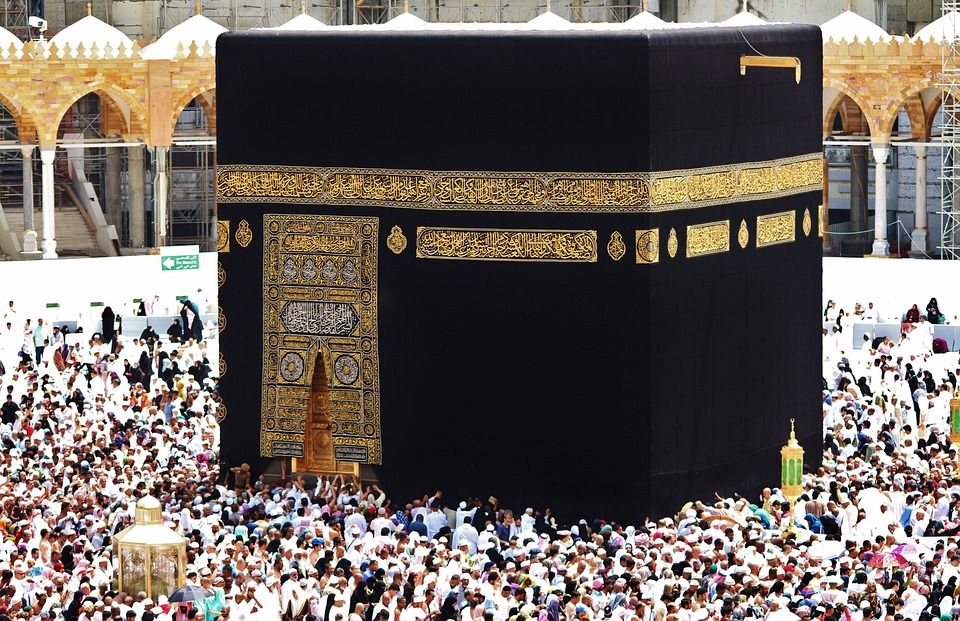
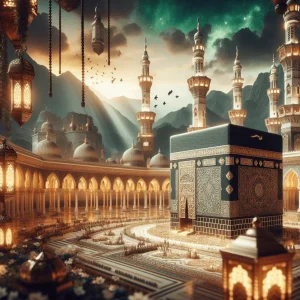
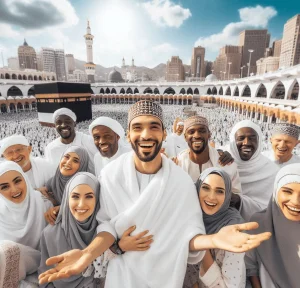
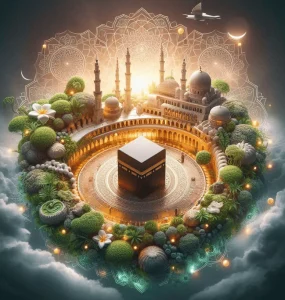
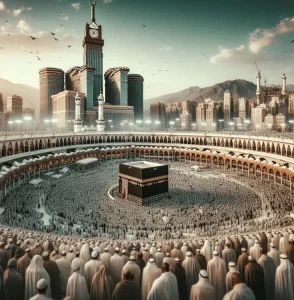
More Stories
The Ultimate Guide to Securing Your Hajj Visa with Confidence and Ease
Unlock the Vital Importance of Mecca for Lasting Wellness and Inner Peace
The Glorious Truth: Exploring the Majestic Essence of the Kaaba Islam Definition